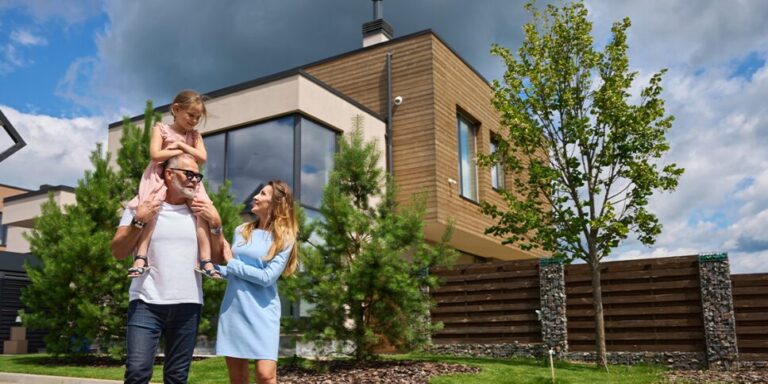
Finding an exceptional home in the premium villa segment goes beyond just impeccable design or lush landscaping. For discerning buyers, the real challenge lies in evaluating value, long‑term viability, and choosing the estate that delivers not just beauty, but comfort, security, and future peace of mind. This guide takes you step by step through how to identify and evaluate premium villas, using insights and comparison frameworks that work in real conditions — while also showing how real estate consulting services can sharpen your decision.
1. Rethinking What “Premium” Really Means
Premium villas often carry an aura of luxury, but for you as a buyer the meaning should shift to measurable value. Ask:
- Will the build quality stand the test of monsoon, humidity, seismic jerks?
- Will operational costs (maintenance, utilities, repairs) erode your lifestyle rather than support it?
- Does the location balance serenity and connectivity — not too remote to strain your routine?
When a villa balances these elements, it earns the label “premium” in practical terms — not just aesthetic.
2. A Buyer’s Mental Model: The Four Pillars of Assessment
Instead of random checklists, assess villa options along four foundational pillars. Rate each candidate villa out of ten on these:
- Structure & Durability
Look into foundation depth, reinforcements, waterproofing, anti‑termite measures, and material grades. A gorgeous façade is worthless if structure fails under extreme weather.
- Living Efficiency & Comfort
Orientation (sunlight, breeze), insulation quality, natural lighting, layouts that reduce energy use, smart systems for temperature control — these reduce monthly bills and elevate everyday living.
- Infrastructure & Ecosystem
Access roads, power backup, water supply, drainage, security systems, green spaces with planting that reduces heat — these are yardsticks for sustainable premium living.
- Value Resilience
Consider resale potential, neighborhood trajectory, flexibility for expansion or modification, capacity for future infrastructure in vicinity. A premium villa should not be a white elephant tomorrow.
You can score each option, compare them side by side, and see which one aligns best with your priorities.
3. Cost Projection: A Life Cycle View of Premium Villas
A villa’s real cost is spread across many years. Here is a quasi‑realistic cost projection framework to help you compare two options:
| Cost Element | Option A (Well‑constructed) | Option B (Looks nice but average quality) |
| Initial Purchase / Construction | ₹75 lakhs | ₹70 lakhs |
| Yearly Maintenance & Repairs (1%) | ₹75,000 | ₹1,40,000 |
| Major Repairs (once every 10 years) | ₹2 lakhs | ₹5 lakhs |
| Utility Efficiency & Energy Savings | High efficiency systems reduce costs by ~10% | Higher running costs |
| Resale Potential & Value Appreciation | Better | Moderate |
Over a 20‑year horizon, the villa built with superior materials and durability may cost only modestly more upfront, but deliver far lower cumulative repair expenditure, utility bills, and resale advantage.
Thus a prudent buyer will often prefer the “higher cost” villa if the long‑term economic delta is in favor.
4. How Real Estate Consulting Services Add Value (Beyond Listings)
When your decisions carry high stakes, listing sites and sales pitches aren’t enough. That’s where real estate consulting services play a critical role:
- They bring access to off‑market options and insights you won’t find publicly.
- They run technical audits of structural plans, material specifications, and contractor credentials.
- They conduct comparative cost modeling across multiple project options so your money goes wiser.
- They verify compliance, zoning, and legal clearances on your behalf — saving you time and risk.
- They act as your negotiation partner, helping you lock favorable terms, benchmarks, and guarantees.
In short, they help transform an emotional purchase into a disciplined investment.
5. Comparing Builders & Premium Villa Brands
When you narrow your shortlist, compare carefully across builders or projects. Here’s a neutral way to compare brands without overt promotion:
- Delivery track record: How many projects delivered on time, quality, and finish?
- Structural warranties & guarantees: 5‑ or 10‑year structural warranty, waterproofing guarantees, etc.
- Transparency in cost breakup: How open are they about hidden charges (landscaping, road works, utility provisioning)?
- After‑sales support: Do they maintain common areas? What is their response mechanism for maintenance complaints?
- Local presence & maintenance logistics: A local builder can deliver, service, and troubleshoot more efficiently, reducing friction.
If your region or city has options from national developers, boutique luxury developers, and local regional builders, compare those three tracks. Often a local developer gives you more hands‑on support; a national one assures brand trust; a boutique luxury one may offer cutting edge design but risk higher escalations.
6. Timing, Seasonal Strategy & Negotiation Tactics
Even in the premium segment, timing and negotiation can improve your terms:
- Early project phases (plot carving, foundation) often carry incentives — developers want committed buyers to launch subsequent phases.
- Avoid periods of high demand (festive seasons, booming real estate cycles) as markup is steeper then.
- Use comparative offers: if one builder gives you a term, ask others to match or beat it.
- Lock escalation caps in contract: specify that cost overruns beyond certain percentage cannot be passed to you.
- Negotiate useful add‑ons (e.g. landscaping, utility hookups) rather than discounts — these often add real value without eating into
 developer’s margins.
developer’s margins.
7. A New Buyer Checklist Before Commitment
Before you sign a deal or give any advance, walk the site with eyes wide open using this guardrail checklist:
- Walk the plots or show villas in person, not just model units. Feel orientation, slope, soil, drainage.
- Ask for structural drawings, bill of quantities (BOQ) and material specs in writing.
- Demand proof of legal title, land conversion (if needed), environmental clearances, local municipal approvals.
- Confirm that the contract ties payment to delivery stages (foundation, roof slab, finishing) — not arbitrary dates.
- Check maintenance and common area agreements: who pays, how often, what standards?
- Simulate everyday use: power cuts, water supply, access during monsoon — ask neighbors or residents.
8. Summary: Choosing with Confidence
The difference between a dream villa and a continual burden lies in disciplined evaluation. Use the four pillars to rate your options. Project long‑term economics, not just upfront cost. Leverage real estate consulting services to uncover hidden risks and sharpen your negotiation position. Evaluate builders not by glitz but consistency, responsiveness, structural integrity, and support.
In premium villa buying, emotions matter — you should feel awe. But decisions must rest on logic, comparison, and anticipation of decades ahead. Follow this guide, and your choice will reflect not just aspiration but sustainable value.




